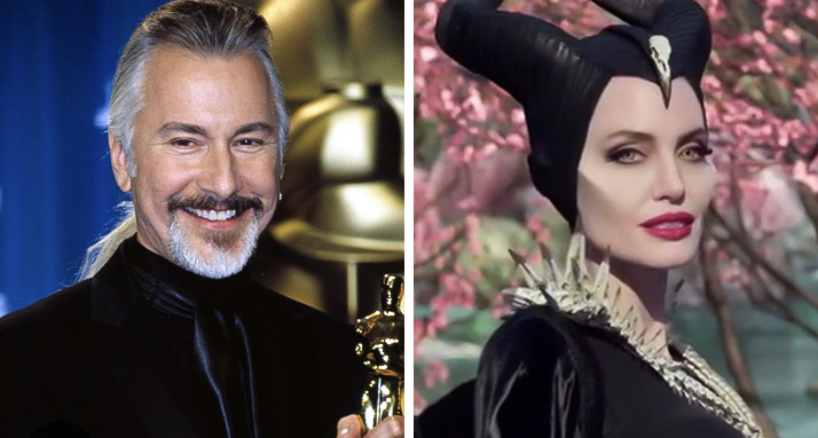The Role of Makeup in Film and Theater: Creating Characters Through Cosmetics
The art of makeup in film and theater is a vital element that brings characters to life, enhances storytelling, and immerses audiences in different worlds. Makeup artists in these industries are not just beauticians; they are storytellers and illusionists, using their skills to create and transform characters in ways that words and actions alone cannot achieve. In this article, we will explore the fascinating role of makeup in film and theater, discussing how artists use cosmetics to create compelling characters, enhance narratives, and bring scripts to life.
Transformative Power of Makeup
Makeup in film and theater is about more than just enhancing an actor's natural features; it involves creating entire personas that support the narrative and emotional arc of the story.
1. Character Creation:
Aging: Makeup artists can add decades to a character’s appearance using techniques such as contouring, stippling, and applying prosthetics. This allows actors to portray characters at various stages of their lives.
Fantasy and Sci-Fi: In genres like fantasy and science fiction, makeup artists create entirely new species and creatures. Prosthetics, special effects makeup, and body paints are used to transform actors into aliens, mythical beings, or otherworldly creatures.
2. Realism and Historical Accuracy:
Period Pieces: Makeup artists meticulously research historical periods to ensure that the makeup accurately reflects the era being portrayed. This includes the use of appropriate colors, styles, and application techniques to create an authentic look.
Realism: For films and plays set in realistic settings, makeup artists use their skills to enhance natural features, create believable injuries, or simulate environmental effects (like sweat or dirt).
Enhancing Storytelling
Makeup is a powerful tool for enhancing storytelling, helping to convey a character's journey, emotions, and transformation throughout the narrative.
1. Emotional Impact:
Subtle Changes: Small, subtle changes in makeup can signal significant shifts in a character's emotional or psychological state. For example, darkening the eyes and adding shadows can depict a character’s descent into sadness or madness.
Dramatic Effects: Bold makeup choices can amplify dramatic moments, such as using bright colors and sharp lines to signify a character’s moment of triumph or downfall.
2. Visual Continuity:
Character Consistency: Makeup ensures visual consistency for characters, particularly in long-running theater productions or film shoots that occur out of sequence. This consistency helps maintain the audience's suspension of disbelief.
Scene Transitions: Makeup can also assist in smooth transitions between scenes, indicating changes in time, place, or situation without the need for additional exposition.
Bringing Scripts to Life
Through makeup, artists bring the written word to life, transforming scripts into vivid, dynamic performances.
1. Collaboration with Other Departments:
Costume Design: Makeup artists work closely with costume designers to ensure a cohesive look. The colors, textures, and styles of makeup should complement the costumes and overall aesthetic of the production.
Lighting and Cinematography: Understanding how makeup interacts with stage lighting or camera angles is crucial. Makeup artists adjust their techniques to ensure the makeup looks its best under various lighting conditions and through the lens.
2. Special Effects Makeup:
Injuries and Deformities: Creating realistic injuries or deformities requires a high level of skill and knowledge of anatomy. Special effects makeup can include simulated bruises, cuts, scars, or more complex prosthetic applications.
Transformations: Complex transformations, such as turning an actor into a non-human character, involve detailed planning and execution. Prosthetics, airbrushing, and specialized materials like latex or silicone are often used.
Iconic Examples of Makeup in Film and Theater
1. Film:
"The Curious Case of Benjamin Button" (2008): The film required Brad Pitt to age backwards, from an elderly man to an infant, showcasing the transformative power of makeup and CGI.
"Star Wars" Franchise: Characters like Darth Maul, Yoda, and Chewbacca are brought to life through intricate makeup and prosthetics, creating some of the most memorable faces in cinema.
2. Theater:
"The Lion King" on Broadway: The makeup and masks in this production transform actors into lifelike animals, blending traditional African art with innovative makeup techniques.
"Wicked": The character of Elphaba requires a full-body green makeup application, combined with special effects makeup to depict her transformation into the Wicked Witch of the West.
Tips for Aspiring Makeup Artists
1. Education and Training:
Take specialized courses in film and theater makeup. Learn about prosthetics, special effects, and the use of various materials.
Stay updated on industry trends and techniques by attending workshops and following influential makeup artists.
2. Practice and Portfolio Building:
Practice different makeup styles and techniques regularly. Create a diverse portfolio showcasing your ability to transform and create characters.
Work on student films, community theater, or independent projects to gain experience and build your reputation.
3. Networking and Collaboration:
Build relationships with other professionals in the industry, such as costume designers, directors, and actors.
Collaborate on projects to gain practical experience and exposure.
Conclusion: The Magic of Makeup in Performance Arts
The role of makeup in film and theater is integral to the storytelling process, transforming actors into characters and bringing scripts to life. Makeup artists are essential creators in the world of performance arts, using their skills to enhance visual narratives and captivate audiences. Whether through subtle enhancements or dramatic transformations, the artistry of makeup in film and theater continues to be a powerful tool in the magic of storytelling.

